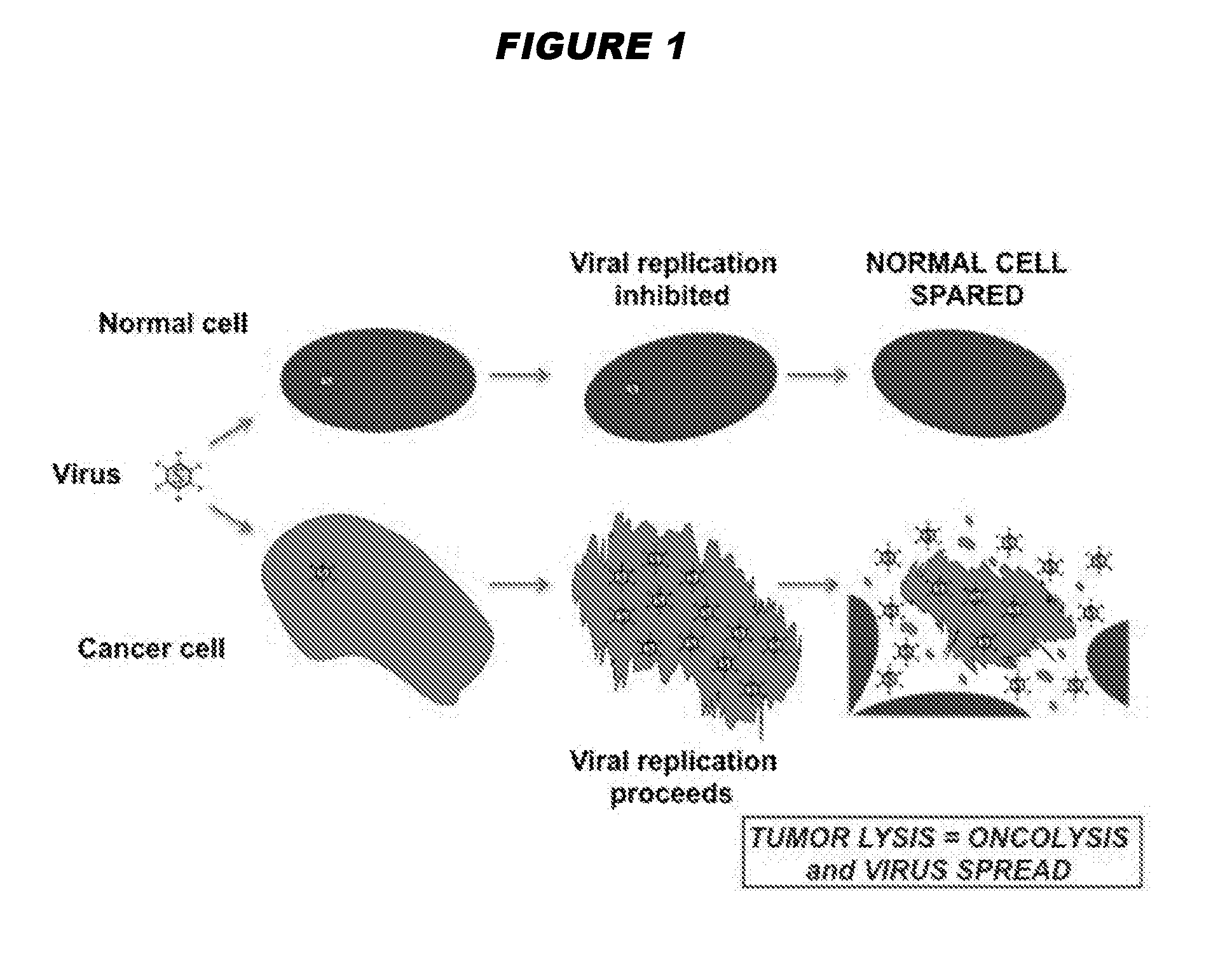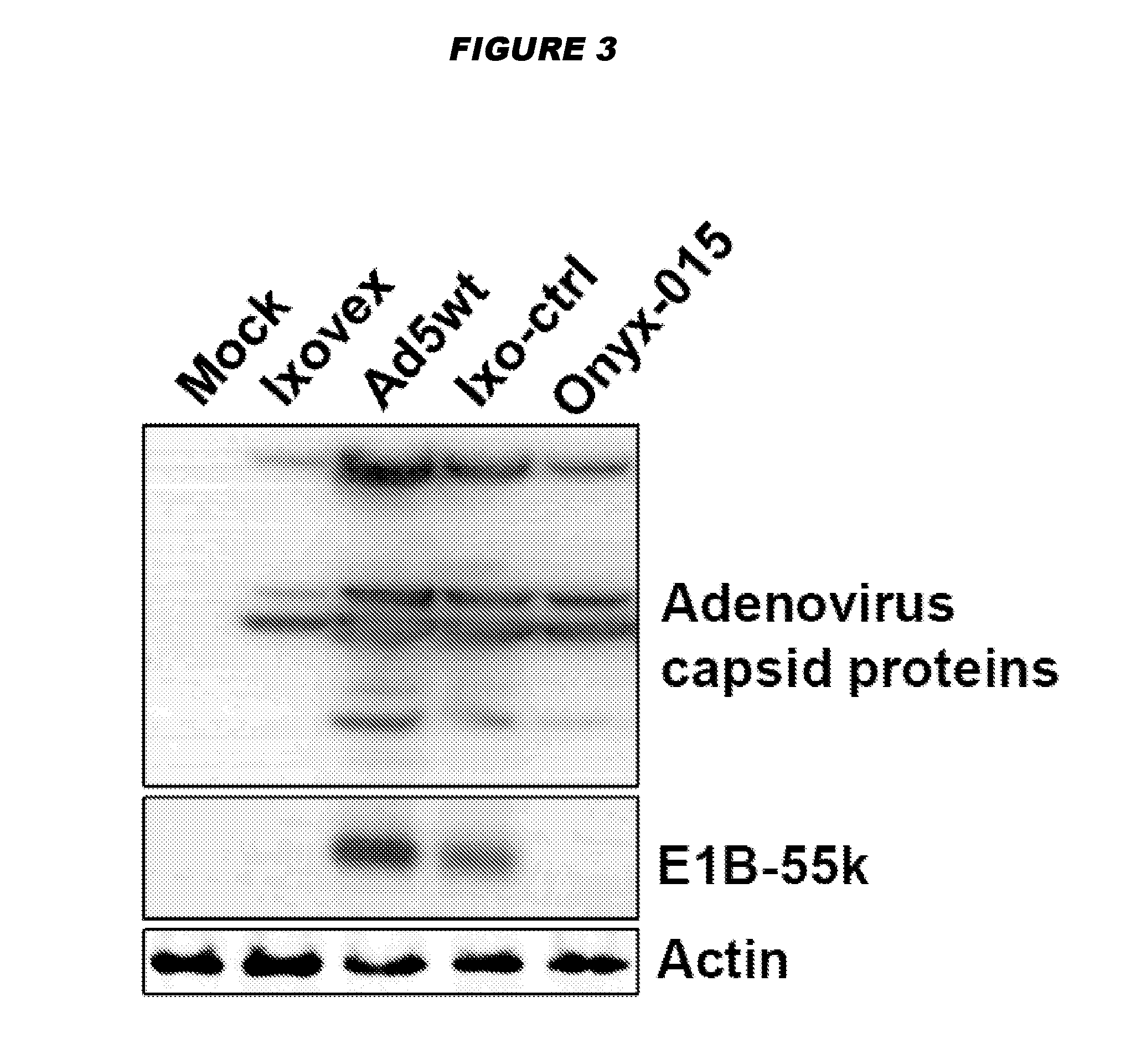Oncolytic adenoviruses with increased proportion of the 156r splicing isoform of the e1b protein
a technology of adenovirus and adenovirus, which is applied in the field of mutations of the e1b gene, can solve the problems of lack of ability to bind and inactivate p53, limited success of studies, and insufficient replication efficiency in cells, so as to increase the level of the e1b-156r isoform and increase the activity of oncolytic activity
- Summary
- Abstract
- Description
- Claims
- Application Information
AI Technical Summary
Benefits of technology
Problems solved by technology
Method used
Image
Examples
Embodiment Construction
[0124]Materials and Methods
[0125]Virus Construction
[0126]Nucleotides 1-5055 of adenovirus serotype 5 (Ad5) were PCR amplified with Phusion PFU polymerase using Ad5start (SEQ ID NO:15—ccacctcgagttaattaacatcatcaataatataccttattttg) and Ad5wt5055as (SEQ ID NO: 16—gtgggtttaaacggatttggtcagggaaaacatg) oligonucleotides. Viral genomic DNA extracted from a CsCl purified Ad5 batch was used as a template. The PCR product was cloned into pShuttle (Stratagene) using restriction enzymes NotI and PmeI (NEB). To produce E1B 93R splice site mutations in pShuttle-5055, the oligonucleotides Mut93Rs (SEQ ID NO: 17—ccttgcatttgggtaatagaagaggagtgttcctaccttaccaatg) and Mut93Ras (SEQ ID NO: 18—cattggtaaggtaggaacactcctcttctattacccaaatgcaagg) were used in a PCR Mutagenesis XL reaction (Stratagene), according to manufacturers' instructions. Clones were screened and sent for sequencing. Five μg of the correct clone were linearised using PmeI (NEB), phenol / chloroform-treated and ethanol precipitated. Two hundred ...
PUM
| Property | Measurement | Unit |
|---|---|---|
| Fraction | aaaaa | aaaaa |
| Composition | aaaaa | aaaaa |
| Level | aaaaa | aaaaa |
Abstract
Description
Claims
Application Information
 Login to View More
Login to View More - R&D
- Intellectual Property
- Life Sciences
- Materials
- Tech Scout
- Unparalleled Data Quality
- Higher Quality Content
- 60% Fewer Hallucinations
Browse by: Latest US Patents, China's latest patents, Technical Efficacy Thesaurus, Application Domain, Technology Topic, Popular Technical Reports.
© 2025 PatSnap. All rights reserved.Legal|Privacy policy|Modern Slavery Act Transparency Statement|Sitemap|About US| Contact US: help@patsnap.com



